In conjunction with our last article about the Great Raid at Cabanatuan last year, we decided that it would be great to have a comprehensive historical read to commemorate the most successful POW rescue mission in U.S. military history.
Last January 30, Filipino and U.S. Armed Forces veterans remembered the moment where a historic brotherhood was born.
On January 30, 1945, United States Army Rangers, 6th Ranger Battalion, the Alamo Scouts, and Filipino Guerrillas banded together to liberate more than 500 allied prisoners of war (POW) in Cabanatuan, Nueva Ecija, Philippines.
This comes after the Bataan Death March, a deadly and inhumane march where 80,000 American and Filipino troops and civilians were forced to walk 112km from Mariveles, Bataan to Camp O’Donnell, with only 54,000 making it through the grueling torture.
Planning The Historic Raid

Starving to liberate their brothers, the Americans and Filipinos troops led by Major Robert Lapham (United States Army Forces in the Far East or USAFFE) and Filipino Guerilla Leader Captain Juan Pajota hatched a plan to raid the Cabanatuan prisoner camp. A suggestion was made by Lieutenant Colonel Bernard Anderson where they would raid the camp, and the Filipino Guerrillas would escort the POWs to Debut Bay. American forces would then evacuate U.S. personnel through 30 submarines.
However, upon presentation to General Douglas MacArthur, who arrived earlier in 1944, he later rejected the mission proposal as it posed too much of a threat for allied forces. He feared that the malnourished and fragile state of the POWs would make them too difficult to move and he feared the Japanese would kill them all at the first sign of a rescue. Moreover, 30 submarines were not available during the raid, especially with the planned retaking of Luzon and Manila.
Lapham, eager to see the mission through, discussed further planning with Lieutenant General Walter Krueger and his intelligence chief, Col. Horton White, at the Sixth Army headquarters. Upon arrival, he immediately proposed that they rescue the 500 prisoners of war located in Cabanatuan as they had intelligence that the Japanese would execute all of them as the army unit expected to be withdrawn to join the fighting. Krueger then approved the rescue mission, provided that the troops would execute the plan on January 29, 1945, as they would need backup from the I Corps. White recruited the 6th Ranger Battalion headed by Lt. Col. Henry Mucci to lead the raid with Captain Robert Prince and the Alamo scouts providing reconnaissance.
Once they were all assembled, they hatched the plan wherein 14 scouts would survey the camp before the main American forces comprised of 121 rangers surrounding the camp. Around 200 Filipino Guerrillas would provide support for the American troops as they were experts of the terrain.
With their .45 pistols, hand grenades, an assortment of light weapons like the M1 carbine, M1 Garand rifles, and Thompson submachine guns, they left executed the rescue mission at 17:30 PST.
Brotherhood Behind Enemy Lines
Mucci, with 120 Rangers, Prince had 90 rangers, and Lt. Murphy, with 30 rangers, swiftly and carefully infiltrated the Japanese enemy lines guided by expert Filipino guerrillas. At one point, the company almost blew their cover because of rowdy dogs and noisy chickens, as well as a chance encounter with a Japanese tank.
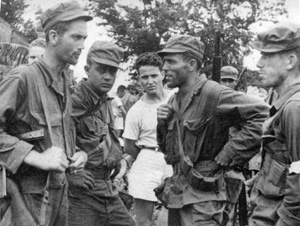
The troops then met with Alamo Scouts Nellist and Rounsaville. They discovered that the terrain around the camp was severely flat, leaving the American and Filipino soldiers widely vulnerable to Japanese firepower. Later, USAFFE Filipino Guerilla Captain Juan Pajota would deliver crucial intelligence to Mucci. He and his men encountered over 1,000 Imperial Japanese forces near the Cabanatuan Prison Camp, and 7,000 Japanese troops were available to the camp as reinforcement in case a raid happened. Upon this information, Mucci postponed the raid for 24 hours – a postponement that would save their lives.
Raiding The Prisoner Camp
Pajota suggests that U.S. Army Air Force (USAAF) airplane P-61 Black Widow from the 547 Night Fighter Squadron serve as a distraction mechanism for their troops while they surround the camp. Mucci approved captain Robert Prince’s revised plan to liberate the prisoners.
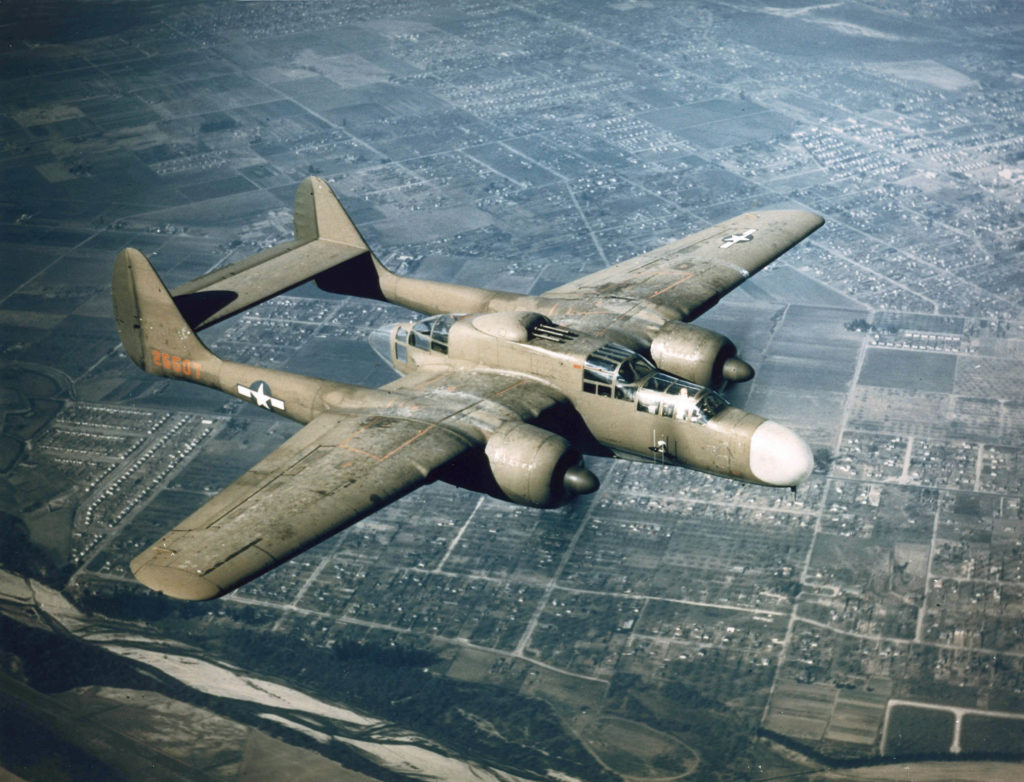
Captain Joson and Captain Pajota led the Filipino forces to set up roadblocks in the nearby wooden bridge at the Cabu River to hold off Japanese reinforcements and possibly ambush these Japanese forces. Under the command of Prince, the Rangers would head to the camp and wait for nightfall. Later at 18:00, the P-61 Black Widow operated by Capt. Kenneth Schrieber and 1st Lt. Bonnie Rucks pretended to have engine trouble by cutting off the left engine and restarting the engine to create backfire sounds. This tactic worked as the Japanese forces guarding the camp thought an allied aircraft might crash and were watching it carefully to see where it might end up going down.
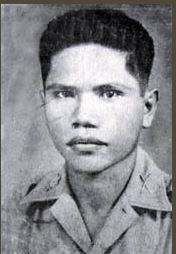
While this was happening, Prince’s company would make their way to the camp, surrounding it while on their bellies (prone-position). Lt. Carlos Tombo later made an ingenious move. He cut the Japanese’s telephone lines so that the 7,000 strong Imperial Army reinforcements could not be called upon when the allied forces had officially fired the first bullet.
And so, the raid began at 19:40 when American troops started firing at the guard towers and pillboxes, riding the camp of its external guards. Sergeant Ted Richardson then shot the padlock to open the main gate, with troops providing cover fire to eliminate the Japanese forces situated within the camp.
The prisoners, who thought that their demise at the hands of the Japanese had begun, immediately ran and hid in their shacks and irrigation ditches. Earlier, Filipino children threw rocks with notes on them from Mucci and Prince, telling them that they should get ready to evacuate. However, they thought the Filipino kids were playing a prank on them, so they did not think much about it and ultimately disregarded it.
It was not till the Rangers had infiltrated the camp fully and yelled out that they were friendlies that the prisoners got out of their hiding spots. Perhaps more interestingly, the POWs thought that the Rangers were the Japanese guards as they did not recognize the uniform of the U.S. forces. They actually thought that the Japanese guards were tricking them to come out as the U.S. forces wore a vaguely similar cap that the Imperial Army had used.
Pajota and Joson, who heard the gunshots, immediately encountered the Japanese forces, who also heard the gunshots. When Japanese troops and tanks were mobilizing toward the camp to provide reinforcement, the genius Filipinos had a little surprise for the Imperial forces. It turns out that the bridge had been rigged with demolition charges set to go off at 19:45. While it did not destroy the bridge, it certainly created a large enough hole so that the Japanese reinforcements could not pass. It was due to this quick thinking that the guerilla forces held off the reinforcements, which would have severely compromised the actual raid.
At the end of the raid at 20:15, Prince fired his flare gun to signal that the assault had been finished. With soldiers carrying a number of severely malnourished soldiers on their backs, they trekked toward Talavera, a town captured by the Sixth Army earlier. With the help of some 50 to 100 carts being pulled by Filipino native carabaos, over 492 Americans, 23 British, 3 Norwegians, 1 Canadian, and 1 Filipino prisoner were liberated from Camp O’Donnell. This raid was soon followed by the Santo Tomas Internment Camp Raid and the Raid of Los Banos on February 23.
Because of their valiant efforts, Mucci and Prince were awarded the Distinguished Service Cross while several Rangers received Silver Stars, and all of the members of the raid received Bronze Stars.
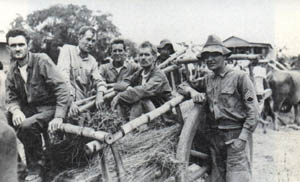
And that’s how American and Filipino soldiers formed an even stronger brotherhood nearing the end of World War II, a brotherhood that lasts to this day. Here is some footage of the actual evacuation of the camp.
https://youtu.be/63Fzw6_b7qA

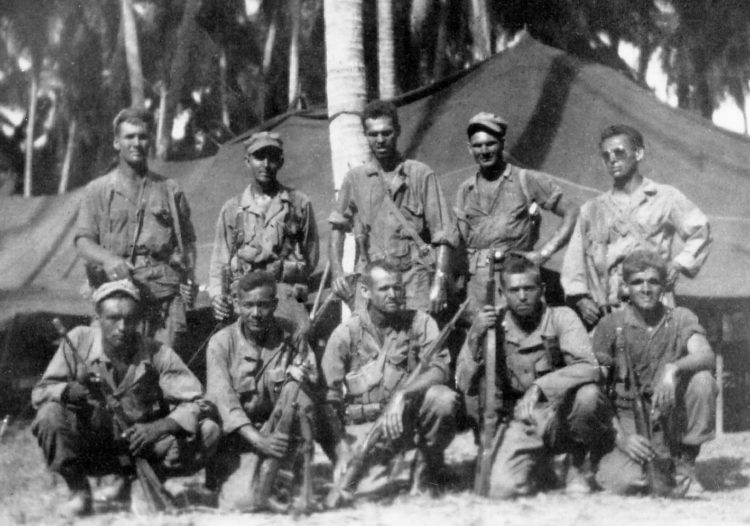








COMMENTS
You must become a subscriber or login to view or post comments on this article.